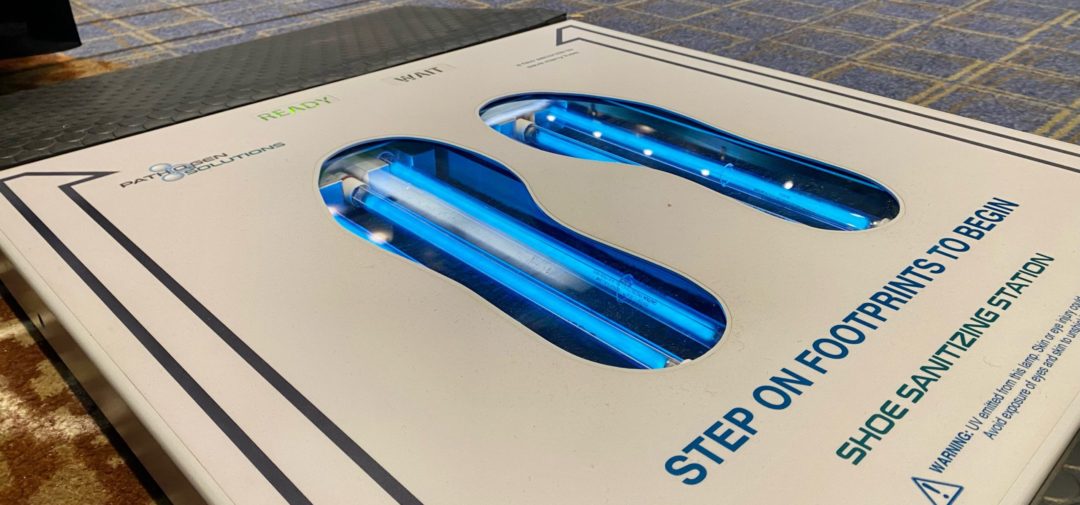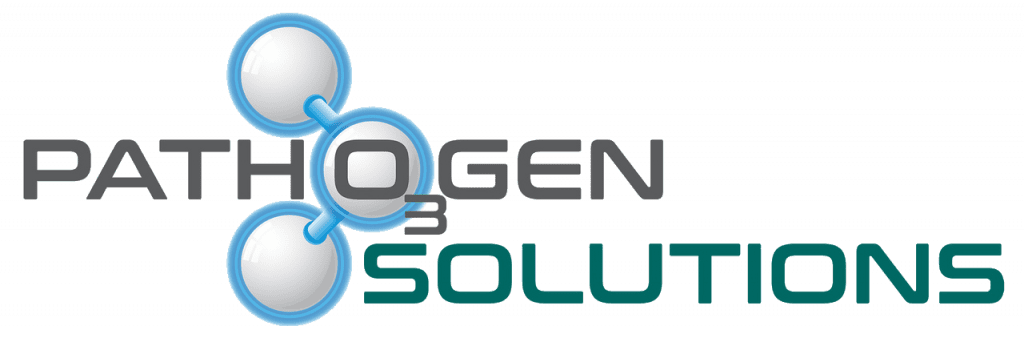UV Shoe Sanitizing Stations Can Improve Biosecurity in Livestock Production
Bacteria, Facility, Shoes, UVC
Biosecurity is a critical component in livestock production. It encompasses all measures taken to protect the population from harmful biological substances. With the global demand for animal products on the rise, maintaining high biosecurity standards has never been more important. It not only safeguards animal health but also ensures the quality and safety of the products derived from them.
One innovative approach to enhancing biosecurity is the use of UV shoe sanitizing stations. These devices utilize ultraviolet (UV) light, a proven disinfection method, to eliminate harmful pathogens that may be present on footwear. By integrating UV shoe sanitizers into their biosecurity protocols, livestock producers can add an extra layer of protection against disease transmission.
The Role of Footwear in Spreading Infections in Livestock Production
Footwear can often be an overlooked vector for disease transmission in livestock production. Workers moving from one area to another can inadvertently carry pathogens on their shoes, introducing them to previously uncontaminated spaces. This can lead to the rapid spread of diseases, posing a significant threat to animal health and productivity.
For instance, diseases such as Avian Influenza in poultry, Foot-and-Mouth Disease in cattle, and Porcine Epidemic Diarrhea virus in swine can all be transmitted via contaminated footwear. These diseases can have devastating effects on livestock populations, leading to significant economic losses.
By understanding and addressing the role of footwear in disease transmission, livestock producers can significantly enhance their biosecurity measures. UV shoe sanitizing stations offer a practical and effective solution to this often overlooked biosecurity risk.
Understanding UV Shoe Sanitizing Stations
What are UV Shoe Sanitizing Stations?
UV shoe sanitizing stations are innovative devices designed to disinfect footwear and reduce the risk of pathogen transmission. These stations use ultraviolet (UV) light, a type of electromagnetic radiation, to kill or inactivate microorganisms by destroying their DNA and disrupting their cellular functions.
The operation of UV shoe sanitizing stations is straightforward. Users simply step into the station, and within a matter of seconds, their footwear is exposed to UV light that targets and eliminates harmful pathogens. This quick and efficient process makes UV shoe sanitizers a practical addition to biosecurity protocols in livestock production.
The Science Behind UV Shoe Sanitizing Stations
The effectiveness of UV shoe sanitizing stations lies in the germicidal properties of UV light. Specifically, UV-C light, which has a wavelength of 200-280 nanometers, is known for its disinfection capabilities. When microorganisms are exposed to UV-C light, it is absorbed by their DNA, RNA, and proteins, causing damage that prevents the microorganism from replicating or functioning properly.
However, UV light alone may not be sufficient to eliminate all pathogens, especially those embedded in dirt or organic material on shoes. This is where ozone comes into play. Ozone is a powerful oxidant that can destroy a wide range of pathogens. In UV shoe sanitizing stations, ozone is used in conjunction with UV light to enhance the disinfection process. The ozone oxidizes the outer layer of the microorganism, allowing the UV light to penetrate more effectively and ensuring a more thorough disinfection.
By combining UV light and ozone, UV shoe sanitizing stations offer a robust solution for footwear disinfection, contributing significantly to improved biosecurity in livestock production.
How UV Shoe Sanitizing Stations Can Improve Biosecurity in Livestock Production
Preventing Disease Spread
UV shoe sanitizing stations play a crucial role in preventing the spread of diseases in livestock production. By effectively disinfecting footwear, these stations eliminate a common vector for pathogen transmission, thereby reducing the risk of disease outbreaks.
The impact of disease spread on livestock health and productivity can be significant. Outbreaks can lead to high mortality rates, reduced growth rates, and decreased reproductive performance. Moreover, they can necessitate costly interventions such as mass medication or culling. By helping to prevent disease spread, UV shoe sanitizing stations can contribute to healthier livestock populations and more productive operations.
Improving Biosecurity Compliance
UV shoe sanitizing stations can also improve biosecurity compliance. Their ease of use encourages regular use by workers, promoting adherence to biosecurity protocols. Furthermore, their visible presence serves as a constant reminder of the importance of biosecurity, reinforcing a culture of hygiene and safety.
The case of Lone Star Dairy Products illustrates this point. After adopting UV shoe sanitizing stations, the company saw its hygiene compliance rate increase from 56% to 96% over a six-month period. This included not only footwear sanitizing but also hand washing and proper use of protective gear.
Enhancing Animal and Worker Safety
Finally, UV shoe sanitizing stations can enhance the safety of both animals and workers. For animals, the reduction in disease exposure contributes to better overall health and well-being. For workers, the stations help to prevent illnesses that can be contracted from infected animals, creating a safer working environment.
In conclusion, UV shoe sanitizing stations offer a practical and effective solution for improving biosecurity in livestock production. By preventing disease spread, improving biosecurity compliance, and enhancing animal and worker safety, these devices can contribute significantly to the success and sustainability of livestock operations.
Embracing UV Shoe Sanitizers for Enhanced Biosecurity in Livestock Production
In summary, UV shoe sanitizing stations present a powerful tool for bolstering biosecurity in livestock production. By effectively eliminating pathogens on footwear, these stations help prevent disease spread, thereby safeguarding animal health and productivity. Their ease of use and visible presence also promote better biosecurity compliance among workers, further enhancing their effectiveness.
The case of Lone Star Dairy Products serves as a testament to the transformative impact of UV shoe sanitizing stations. Their experience shows that such technology can lead to significant improvements in hygiene compliance, contributing to a safer and more secure environment for both animals and workers.
For livestock producers seeking to strengthen their biosecurity measures and protect their operations from the threat of disease, the implementation of UV shoe sanitizing stations is a worthwhile consideration. To learn more about how UV shoe sanitizers can benefit your livestock production, feel free to call us at 727-300-1069 or book a demo today. Embrace the future of biosecurity today and take a proactive step towards a healthier, more productive livestock operation.
Frequently Asked Questions About UV Shoe Sanitizing Stations in Livestock Production
1. How do UV shoe sanitizing stations work?
UV shoe sanitizing stations use a combination of ultraviolet (UV) light and ozone to disinfect footwear. The UV light damages the DNA and RNA of pathogens, preventing them from replicating, while the ozone oxidizes their outer layer, enhancing the effectiveness of the UV light.
2. Are UV shoe sanitizing stations safe to use?
Yes, UV shoe sanitizing stations are safe for humans to use. The UV light is contained within the station, so there is no risk of exposure during operation. Additionally, the ozone used in the process is at a safe concentration level.
3. How can UV shoe sanitizing stations improve biosecurity in livestock production?
UV shoe sanitizing stations can reduce the risk of disease transmission by eliminating pathogens that may be carried on footwear. This can help prevent the spread of diseases within livestock populations, improve biosecurity compliance among workers, and enhance the overall safety of the livestock production environment.
4. How can I implement UV shoe sanitizing stations in my livestock operation?
Implementing UV shoe sanitizing stations in your livestock operation involves placing the stations at key points where disease transmission could occur, such as entrances to barns or processing areas. For more information on how to effectively integrate UV shoe sanitizing stations into your operation, please contact us at 727-300-1069 or schedule a demo today.

